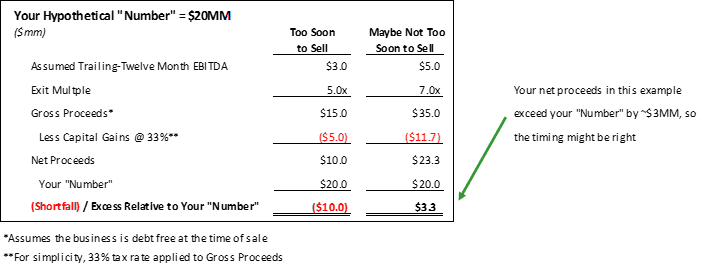“Time is relative; its only worth depends upon what we do as it is passing.” (Albert Einstein)
For a while now, I’ve had this feeling that the value of time has been increasing. At first, I just sensed a hastening in the pace of business. Anyone who uses email can probably attest to this. Did you know that if you don’t respond to a colleague’s email within four hours, you may be triggering anxiety within them based on an innate fear of social rejection? Sad, but true. Anyway, I went on to wonder whether each moment in our modern lives has more intrinsic value given what can now be produced with that time, thanks largely to technology. However, I felt in danger of wandering into the realm of quantum physics and figured I would focus on fighting other metaphysical fires.
Then, I read a short but powerful blog by Seth Godin called, “Opportunity Costs Just Went Up.” Godin posits that every decision has a price given that you are forced to give up alternatives upon choosing a course of action. He goes on to say, “Our access to the world of learning and online resources means that the alternatives are far more valuable than they used to be.” Well said. So, this implies that because we all have finite lifespans, it behooves us to not only understand the alternatives we are giving up, but also derive ways to optimize our decision-making process to maximize the ROI on time spent.
So, how are we to respond to make best use of the time we are allotted? Sometimes it’s easier to identify things we should stop doing than those that we should start doing, but I propose a few ideas and life hacks here.
For Business:
- Develop Time-Denominated KPIs. This is easier in concept than in practice because it requires measurement of the time required to complete a specific task or produce a certain output. However, think about how powerful a material reduction in, say, hold time can be for the customer experience. This piece from Inc. Magazine touches on this point in an article entitled, “Forget About Saving Customers Money. Save Them Time Instead.” Then, you might check out this admittedly VERY deep cut on YouTube…tune in around 0:48 where Herrell says, “…The new currency of business is time.” His ensuing commentary is a fascinating exploration of the significance of rapid response times in a globally connected world. You never know, we may get to a point where dashboards begin reporting on Profit (or Revenue) generated per hour spent on a specific task. I’d love to have more visibility into how that could apply in my own world and have made some progress by implementing time management software called RescueTime.
- Set Weekly Goals. We all have to-do lists, but sometimes the deadline is too far into the future or, worse even, undefined. It’s relatively easy to conceptualize the things we need to get done over the course of a week, so defining a list of tasks to be completed over this time period can be quite powerful in reducing anxiety and stimulating action in the present. Also, we know that the brain rewards the completion of unfinished tasks by freeing up focus for new challenges, a phenomenon known as the Zeigarnik Effect1.
- Safeguard the Time of Your Future Self. It’s tempting to commit to future activities out of a sense of reciprocity to the person who invites you or because of that nagging fear of missing out. Remember, though, that future calendar items that you really don’t feel like doing become pesky obligations in the present before too long. I read somewhere that you can always tell how you feel about a person or activity when you reflect on the face you make when receiving a call, email or letter from them. If the face you make is anything approximating a wince, then it’s safe to say that you should politely decline.
For Life:
- Avoid “Cheap” Dopamine. With great power comes great responsibility…to not waste time on your smart phone! Our phones, and the myriad of apps on them, are in many cases designed to promote engagement with them at a neurological level. It’s not a coincidence that alerts show up in RED and video games offer delightful visual and auditory rewards to keep you coming back. Think about the creative ideas you could have formulated while you were nose-to-screen during that 30-minute Fortnite session. To that end, I’ve taken drastic measures such as deleting all games and turning my screen to grayscale to change my phone from a dopamine producer back into a productivity tool.
- Resist Click-Bait News Headlines. I’m experimenting with a new life hack which is to essentially ignore all digital news and only read the physical newspaper that arrives every Sunday. I figure, if it’s fit to print on Sunday, then it’s survived the weekly flurry of activity and worth my time to consume the information. This hasn’t been easy, but it seems to be freeing up a good amount of time that I could be spending more productively, and my screen time metric has been plummeting. One day at a time. The daily tug of war between screen time and real life is a zero-sum game, and we now live in a 24-hour news cycle that will stop at nothing to capture our attention. So, less news = more time for potentially better uses of our ocular energies, like eye contact with another human.
- Proceed Cautiously with Streaming Content. I’ve got a love / hate relationship with Netflix. On the one hand, it’s frequently my first stop after firing up the Apple TV. On the other, I’ve been guilty of spending an entire episode’s worth of time just scrolling through titles to find something worthy of viewing. This is not only a terrific waste of time, it also drives my wife insane. If, against all odds, I do ultimately land on a title that I deem worthy of watching, I’m often disappointed. So, I’ve started to apply the test of waiting to get a referral from three or more humans whose opinion I trust (i.e. not a recommendation engine) rather than venturing into the rabbit hole of title surfing2. Come to think of it, maybe I’ll just go cold turkey until Game of Thrones Season 8 premiers on April 14thon HBO at which point, I’ll be doing a swan dive off the wagon.
- Generally, Avoid the “Feed” on Social Media Sites3. The “Feed” enjoys elevated status in the pantheon of time wasters. It’s a fabulous way to distract yourself with everyone else’s overshares, self-promotions and marketing messages to the detriment of your productive energies. I can count on one hand the number of people in my network who consistently share high value content, and most of these contributors have their own blogs. If this is the case for you too, just visit their blog sites for updates so that you don’t have to get sucked into the vortex of meaningless posts.
- When Possible, Read Physical Books. If we assume that we should spend some amount of time reading for the purpose of self-improvement, then it’s better to spend that time with physical books. To start, most online articles or digital content is written in a format for rapid consumption. For instance, this piece is what’s called a “listicle” which means that the content is presented wholly or partly in the form of a list. However, this can result in relatively weaker retention of information. As reported in Scientific American back in 2013, when people read on a screen, they tend to take shortcuts and look for keywords rather than going line by line as they would on a paper-based document. As a result, the reader can miss out on the subtleties of creative or academic writing and more quickly forget valuable information which invalidates the exercise of reading in the first place. You also miss out on the psychic benefit of turning pages which reinforces a sense of accomplishment. And, most importantly, how else are people going to know how smart you are until they see all of your knowledge trophies (i.e. books) on your bookshelf?
Well, hopefully this was worth the 3-4 minutes, and I’d be interested to get any additional ideas about how to enhance the ROI on all of our valuable time. Comments please!
_______
1Russian psychologist Dr. Bluma Zeigarnik stumbled upon this finding in the 1920’s after observing that upon returning to a restaurant where she had just finished lunch, her waiter did not remember her, where she was sitting or what she had ordered. She found this peculiar given that the waiter had previously taken everyone’s order accurately without writing anything down. Zeigarnik later conducted a series of experiments that reinforced the conclusion that the human brain remains more focused on unfinished tasks – something that’s also been referred to as the “inner nag”.
2Incidentally, if you’re into mind-bending dystopian movies, check out the 2011 Sci-Fi thriller, In Time, starring Justin Timberlake. Imagine a world where a new economic system has been devised where the currency is time itself and each person has a rechargeable clock on their arm that counts down how long they have to live. Note that I happen to disagree with Rotten Tomatoes on this one and suggest that it’s worth the 109 minutes to watch it. I believe you can rent it on iTunes.
3It’s not lost on me that this piece will likely get some engagement from its appearance on my network’s wall. Sorry not sorry.
About ClearLight Partners
ClearLight is a private equity firm headquartered in Southern California that invests in established, profitable middle-market companies in a range of industry sectors. Investment candidates are typically generating between $4-15 million of EBITDA (or, Operating Profit) and are operating in industries with strong growth prospects. Since inception, ClearLight has raised $900 million in capital across three funds from a single limited partner. The ClearLight team has extensive operating and financial experience and a history of successfully partnering with owners and management teams to drive growth and create value. For more information, visit www.clearlightpartners.com.
Disclaimer: The views and opinions expressed in this blog are solely my own and do not necessarily reflect any ClearLight opinion, position, or policy.












